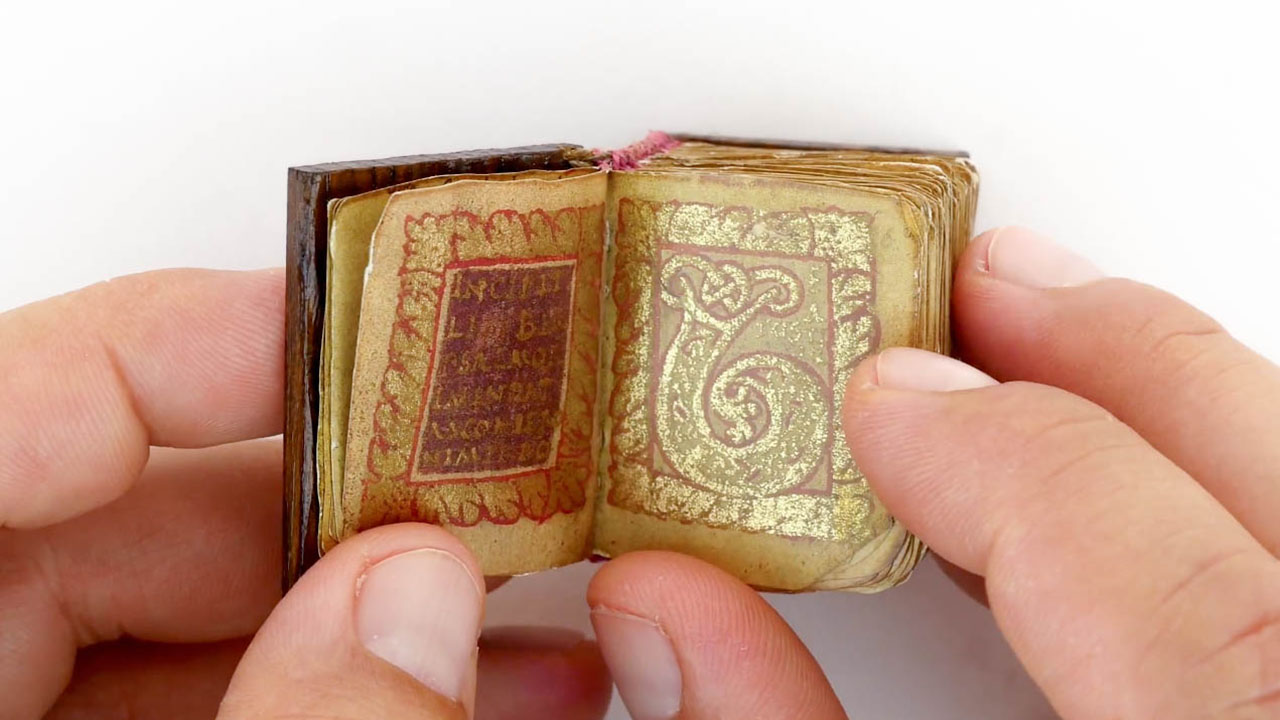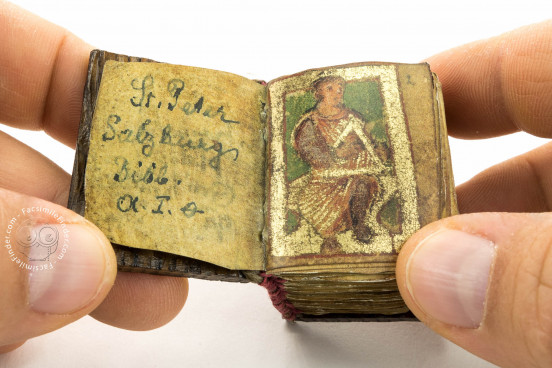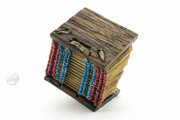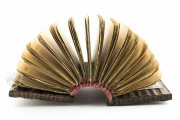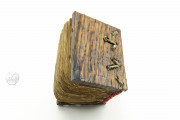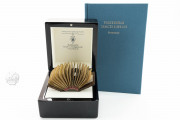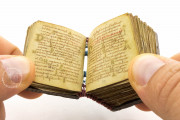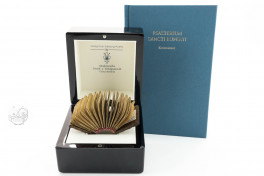The Psalter of Saint Rupert is a lavishly decorated and astonishingly small manuscript of the biblical psalms probably created to serve as an amulet to be worn on the body of a high-ranking Christian. Made in northeastern France in the third quarter of the ninth century, it is a captivating object for its size and elaborate embellishment, which features an author portrait and gold letters of great delicacy. It owes its nickname to Saint Rupert of Salzburg, although it was made nearly two centuries after he lived.
The recitation of the 150 psalms was a focus of medieval Christian—especially monastic—life, and psalters (manuscripts of the psalms) were created as private and communal prayer books as early as the seventh century. The Psalter of Saint Rupert is a product of this tradition, but its tiny size makes it impractical for reading.
The Psalms Divided
The book's major decoration is focused at the beginnings of the first prologue, Psalm 1, Psalm 51, and Psalm 101, reflecting the Christian three-part division of the psalms.
A pair of facing pages with painted frames of gold signals the beginning of Psalm 1; a heading is written in gold on purple at the left, and a large gold interlace initial B (the first letter of the psalm) dominates the right-hand page (fols. 5v-6r). Large gold initials also introduce Psalms 51 and 101 (fols. 56r and 110v).
David as Composer of the Psalms
The Israelite king David, the purported author of the psalms, is pictured on the manuscript's first page, directly before the prologue David filius Jesse ("David, son of Jesse"). He is pictured enthroned, crowned, and wearing royal garments, but the emphasis is on his authorship of the psalms. He is pictured plucking a three-sided harp, a reflection of the ancient commonplace of the poet accompanying himself on a stringed instrument (fol. 1r).
The Gallican Text of the Psalms
The text is the Gallican version of the psalms, the Latin translation that circulated in the Carolingian realm. It is written in Caroline Minuscule, the script that dominated Western Europe by the second quarter of the ninth century. The first letter of each verse is written in gold, and the first of each psalm is two- or three-lines high.
A Salzburg Treasure
The psalter was probably intended to be worn as a closed book tucked into a small pouch of leather or silk as protection from trouble. Nevertheless, its rubbed text and decoration demonstrate that an early owner or owners turned its pages.
It is unknown how the manuscript made its way to the Benedictine monastery of Saint Peter at Salzburg, where it has been since at least the fifteenth century when an inscription was added linking the book to that monastery's seventh-century founder, Saint Rupert. By the seventeenth century, the book was regarded as a Rupert contact relic, and a silver- and gold-clad wooden reliquary was made for it. The current binding, which lacks any covering, displays the characteristics of Carolingian bindings.
We have 2 facsimiles of the manuscript "Psalter of Saint Rupert":
- Psalterium Sancti Ruperti (Standard Edition) facsimile edition published by Akademische Druck- u. Verlagsanstalt (ADEVA), 2007
- Psalterium Sancti Ruperti (Deluxe Edition) facsimile edition published by Akademische Druck- u. Verlagsanstalt (ADEVA), 2007

